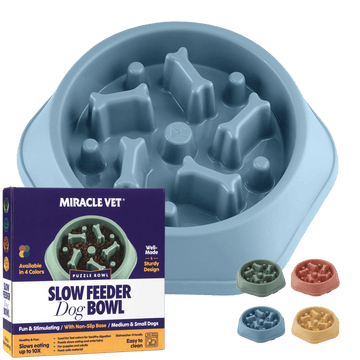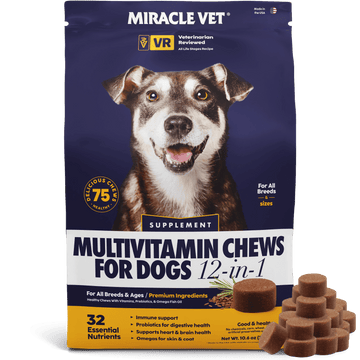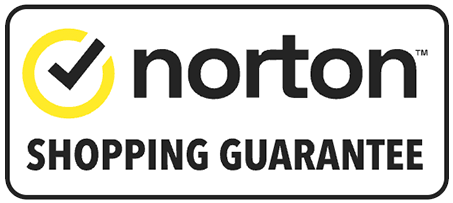Helping your dog gain weight in a healthy and controlled way can make a big difference in their overall well-being. Whether your pup is recovering from illness, dealing with age-related low weight, or is a naturally slim breed, a thoughtful approach to dog nutrition, exercise, and routine monitoring is essential. This guide covers everything you need to know for safe and effective weight gain.
Creating a Balanced Diet Plan for Weight Gain
If your dog is underweight, the first step is working with your veterinarian to build a personalized nutrition strategy. Look for calorie-rich foods that are high in quality proteins (like chicken or beef), healthy fats (such as fish oil), and digestible carbohydrates (like sweet potatoes). Adding the right food in the right amounts is key.
Key tips:
-
Gradually increase food portions to avoid digestive upset
-
Use the best dog food enriched with essential fatty acids
-
Add nutrient-dense human food like peanut butter or pumpkin
-
Ensure your furry friend always has access to clean water
Quick Tips to Support Weight Gain in Dogs
-
Add fat to your dog’s diet with safe sources like salmon oil
-
Feed more frequently, with smaller meals throughout the day
-
Choose high-calorie dry dog food or vet-recommended formulas
-
Mix in premium food like cooked eggs, pumpkin, or cheese
-
Use weight gainers such as liquid supplements or chews
-
Weigh your dog weekly to track progress
-
Always consult your vet before starting any new weight gainer product

Why Healthy Weight Gain Matters
Helping your dog healthily gain weight supports energy levels, immune function, and quality of life. Underweight dogs are more likely to develop health issues and have difficulty recovering from illness or surgery. Providing enough food with the right nutrient mix supports strong bones, better digestion, and a happy, active lifestyle.
Muscle development, stamina, and core strength depend on feeding your dog the right food in appropriate portions. Whether it’s a growing puppy or an aging furry friend, setting realistic goals and taking a balanced approach to nutrition makes a noticeable difference.
What Causes Weight Loss in Dogs?
Before you can address weight gain, it’s crucial to understand why your dog is losing weight. Here are some common causes:
1. Poor Nutrition
Low-quality or improperly portioned dog food often lacks plenty of calories or essential nutrients. Weight loss is inevitable if your dog’s diet is missing key ingredients like protein and fatty acids. Some dogs are also picky eaters who turn away from dry dog food.
2. Health Conditions
Medical issues like parasites, diabetes, or dental problems can prevent nutrient absorption. Even if your dog eats enough food, they might lose weight without the correct diagnosis and care.
3. Aging
Senior dogs often experience changes in appetite or have difficulty chewing. Switching to softer or fresh food with the right blend of proteins and fatty acids is a great way to support healthy aging and weight maintenance.
When to Be Concerned About Weight Loss
While occasional fluctuations in your dog’s weight are normal, unexplained or rapid weight loss is a red flag. You should contact your veterinarian if you notice:
-
A loss of more than 10% of your dog’s body weight
-
Visible bones or sunken body shape
-
Sudden changes in appetite or drinking habits
-
Vomiting, diarrhea, or chronic fatigue
-
Changes in behavior (e.g., withdrawal, aggression, or clinginess)
These signs could indicate severe conditions like cancer, metabolic disorders, digestive problems, or internal parasites. Early diagnosis makes treatment more effective, so don’t delay scheduling a vet visit.
Is Your Dog Underweight? Here’s How to Tell
Look for visible signs:
-
Ribs, spine, or hip bones are visible
-
Low energy levels or a lack of interest in food
-
Dull, brittle coat or flaky skin
You can also use a Body Condition Score (BCS)—a vet-approved method to check for ideal fat and muscle coverage.
Getting Ready for the Weight Gain Journey
Start with a plan. Take stock of your dog’s current feeding habits and health status. Then consult your veterinarian to set a weight gain goal for your furry friend’s needs.
Essentials to Gather:
-
The best dog food formulated for weight gain
-
High-calorie toppers (peanut butter, fish oil, cheese)
-
Bowls, measuring cups, and a food scale
-
A weight gainer supplement, if needed
-
A notebook or app to track weight and meals
Set Realistic Goals and Timelines
Safe weight gain happens gradually. Use your dog’s breed, age, and size to determine a reasonable weekly weight gain amount. Puppies may gain weight faster than older dogs so timelines will vary.
Track progress with regular weigh-ins and adjust food portions based on results. Your goal should be steady gains without overfeeding.
Sample Daily Feeding Plan for Weight Gain
For a medium-sized underweight dog, here's a sample daily plan (customize based on vet advice):
-
7:00 AM: High-calorie dry dog food with canned topper (1.5 cups)
-
12:00 PM: Snack – peanut butter-stuffed toy or protein chew
-
4:00 PM: Meal – Cooked lean meat with sweet potatoes or rice
-
8:00 PM: Dry dog food with fish oil drizzle
-
Bedtime: Optional high-calorie chew or dog weight gain supplement
For the best results: mix the meal with a dose of Miracle Vet high-calorie supplement.
Multiple meals: If your dog eats more than once a day, you can split the supplement dose between meals, which can aid digestion and calorie absorption
Best Time to Give a High-Calorie Supplement to Your Dog
Morning supplementation may be better for dogs needing more energy during the day. It can be beneficial if your dog is lethargic or needs extra calories to stay active.
Giving the supplement in the evening—especially with a larger meal—might encourage the body to store more nutrients as fat during sleep, potentially aiding weight gain. Some sources suggest that a larger evening meal can help with weight gain.
If your dog has digestive issues, evening supplementation may be preferable. Lower activity levels at night can sometimes improve nutrient absorption and reduce digestive upset.
Consistency and proper dosage are more important than the specific time of day.

Step-by-Step Guide to Support Healthy Weight Gain
Step 1: Consult a Veterinarian
Before starting any changes, get a health check to rule out hidden issues and get specific calorie targets.
Step 2: Implement a Nutrient-Rich Diet
Choose dog food rich in proteins, fats, and easy-to-digest carbs. Mix in safe human food to increase calorie count naturally.
Step 3: Gradually Increase Caloric Intake
Add food slowly to prevent digestive upset. Feed smaller meals more often throughout the day.
Step 4: Monitor and Adjust
Weigh your dog weekly. Keep a food log. Look for signs of improved energy and muscle tone.
Nutrition for Weight Gain
Proper nutrition is the foundation of healthy weight gain. Your dog’s diet should include:
-
Proteins: for muscle growth and repair
-
Fatty acids: for energy and coat health
-
Complex carbs: for digestion and steady energy
High-calorie dog foods and weight gainers can be a great way to support these nutritional needs. Talk to your vet about the best balance for your pet.
Common Mistakes to Avoid
Even well-meaning pet parents can make mistakes that stall progress:
-
Overfeeding too fast: Can cause stomach upset
-
Feeding low-quality food: Quantity doesn't equal nutrition
-
Too many treats: Should supplement, not replace, meals
-
Skipping vet advice: Might overlook medical issues
-
Inconsistent meal times: Can confuse or frustrate your dog
Avoiding these missteps helps your furry friend gain weight safely.

Supplements and Weight Gainers
Supplements can provide a boost when food alone isn't enough. Popular options include:
Miracle Vet Liquid & Chews
-
High in protein and healthy fats
-
Easy to administer
-
Helps stimulate appetite and energy
Weight gain supplements are designed to add plenty of calories in a balanced way. Start slowly and monitor your dog’s reaction.

Exercise: The Balance Between Activity and Weight Gain
Gentle exercise supports muscle development without burning too many calories.
Recommended activities:
-
Short leash walks
-
Low-impact fetch sessions
-
Swimming or hydrotherapy
Stay consistent and avoid intense workouts until your dog has gained enough weight. Light activity is a great way to build appetite and mood.
Preventing Obesity After Weight Gain
Once your dog reaches a healthy weight, shift to maintenance mode. Use portion control, weigh regularly, and continue light exercise. Keep treats in check and choose the right food for your dog’s new weight class.
Frequently Asked Questions
What are high-calorie foods safe for dogs?
Lean meats, eggs, sweet potatoes, peanut butter (no xylitol), and cheese.
How often should I weigh my dog?
Weekly during a weight gain plan.
Are supplements necessary?
Only if food alone isn't enough, consult your vet before using any weight gainer.
Is too much exercise bad?
For underweight dogs, intense activity can burn too many calories. Focus on light, consistent movement.
Final Thoughts
Helping your dog gain weight isn’t just about feeding them more—it’s about feeding them smarter. Using the best dog food, adding safe human food, and supporting them with the right weight gainer or supplement can make a lasting difference. With patience, consistency, and veterinary support, your furry friend will get back to a healthy weight the right way. A well-fed dog is a happy, energetic companion ready to thrive.











